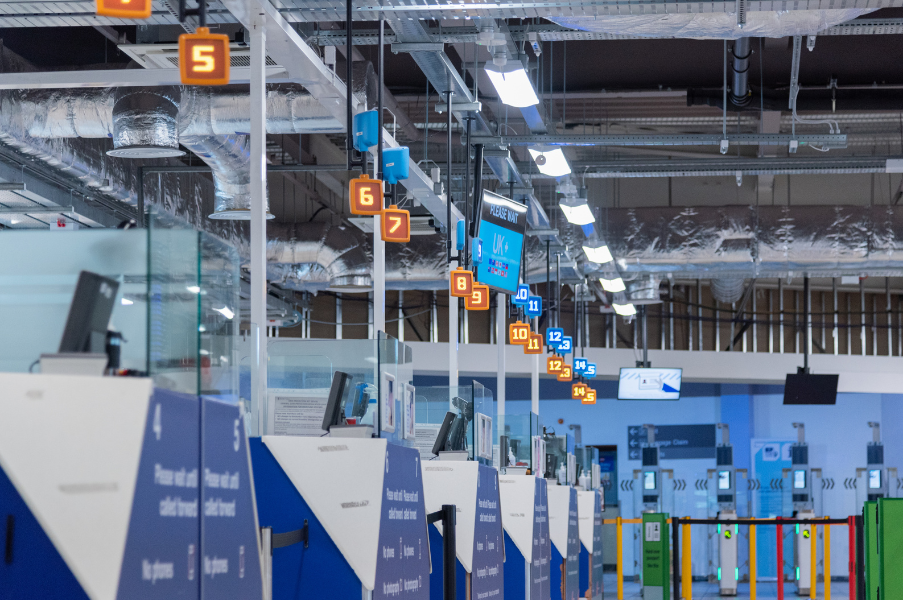- Home
- Sectors
- Solutions
- Tensabarrier®
- Tensator® Charging Stations
- Tensamedia® Wayfinding and Signage
- Lawrence® Post & Rope
- Tensator® Airport Passenger Guidance System
- Electronic Queuing – eQ™
- Tensaguide® Modular Barrier System
- Tensator Micam Protection – TMP
- Safety Solutions
- Access Control
- In-Queue Merchandising
- Virtual Queuing – VQMS
- Tensator® Virtual Assistant
- Custom & Bespoke Solutions
- Resources
- About
- Contact Us
- Shop
 English (English)
English (English)
28
May
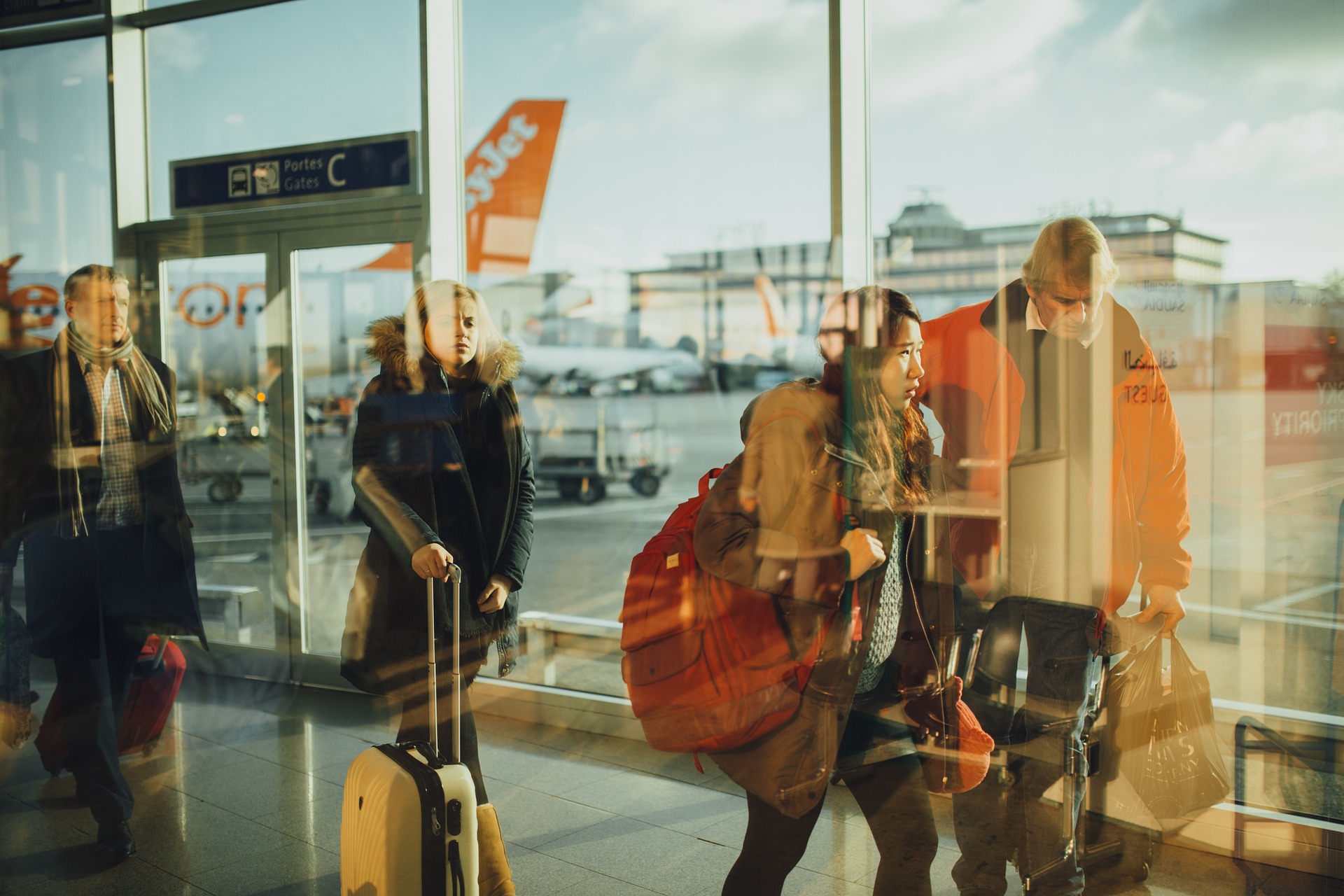
With summer just around the corner, many airports are gearing up for what’s likely to be their busiest time of year footfall wise. Last year, the busiest day in aviation history was recorded when a staggering 212,000 flights filled the sky in a single day in June. An added number of scheduled flights in the sky inevitably means that more passengers will pass through airports — a UK government report shows that airport passenger figures in the UK alone are up by 27% since 2010.
With additional passengers comes a greater pressure for airports to improve passenger flow, ensuring that customers are moved around the airport efficiently and queues are minimised. If airports fail to effectively manage passenger flow in their terminals and beyond, customers will favour competitor airports, leading to reduced revenue and reputational damage.
Although it’s always been a priority for airports to provide good customer service to get journeys off to the best start, this need has been magnified in recent years with rising customer expectations and the prominence of social media. Now, it’s never been easier for dissatisfied customers to share their frustrations with the world, in turn putting off potential customers from using a certain airport.
What can terminal operations managers do to improve airport passenger flow and keep their flyers happy?
Speed up your passenger flow with our airport queue management solutions – download our brochure now
How to improve airport passenger flow — our top tips
Look back and understand where queues have occurred in the past
A passenger flow backlog can occur at any stage in the airport. Think about all the areas that passengers congregate: check-in, security, duty-free shopping, boarding gates, and then on the other side, passport control and baggage collection. Are there any ‘bottle-neck’ areas of the airport where customers tend to get stuck? Understanding where problems occur is the first step in rectifying issues in passenger movements.
Accommodate for both busy and quiet times at an airport
A difficulty experienced by many airports when looking to improve passenger flow is having to accommodate for both peak and quiet times at an airport.
At areas such as check-in desks, heightened volumes of customers can often lead to queues building up, becoming disorganised and spilling into other areas of the airport if proper queue management systems aren’t in place. To improve airport passenger flow in this instance, consider deploying a retractable queuing barrier to organise queues and keep passengers in their allocated section of the airport. Our Tensabarrier is a portable queuing solution, meaning the system can be brought and removed when passenger flow decreases.
Conversely, at low times of passenger movement, such as late at night, it can be annoying to navigate through barriers that aren’t in use. For instances such as these, we’ve created the ShortcutQ system. Your passengers will never need to have the annoyance of walking all the way through a single line queue. Instead, they’ll be able to take a shortcut to the front.
Invest in technology to digitalise and automate the airport passenger journey
If you find that your service desk is experiencing long queues and constantly being asked the same question, consider a digital solution to present the information.
A great example of this is when Boston Logan Airport invested in a Tensator Virtual Assistant to relay security information in both Spanish and English. As the customers were better informed of procedures, the passenger flow improved, freeing up time for staff to answer other questions.
If queues are unavoidable, educate passengers with the expected wait-times
Unfortunately, in some scenarios, queues in an airport really are unavoidable. Often what fuels passengers’ annoyance is not that they have to queue but that there’s an uncertainty of how long the wait will be. Consider digital signage to display information about current wait-times to manage expectations.
Watch this video to see for yourself how the above tips can be implemented together to improve passenger flow.
Further information on how to improve airport passenger flow
As the global market-leader of queue management products within the airport sector, we understand the pressures airports are under to continuously improve airport passenger flow.
We work on a consultative basis and our solutions are tailored to your needs and to meet your objectives — no one size fits all. Our products can provide a solution for all zones of the airport, from check-in, security screening and departure gates to immigration and operational areas. So wherever you anticipate queues building up across the airport, Tensator is there to keep your airport passengers smiling and speed them on their way.
For further information on how we can help improve airport passenger flow, contact us at your convenience. Alternatively, why not take a look at our airport queue management brochure? To download, click the image below.

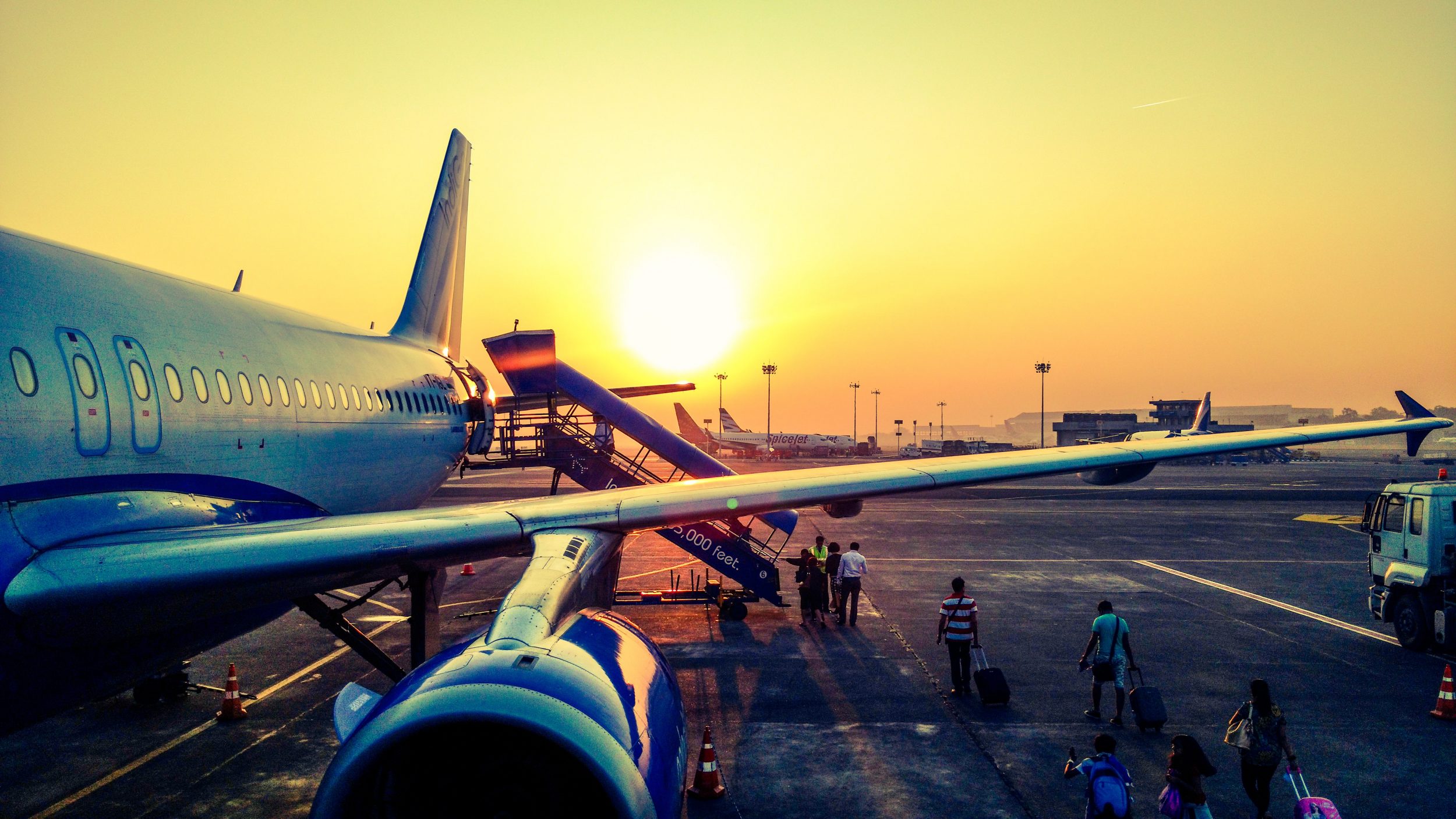 3 simple ways to improve queue management in airports
3 simple ways to improve queue management in airports 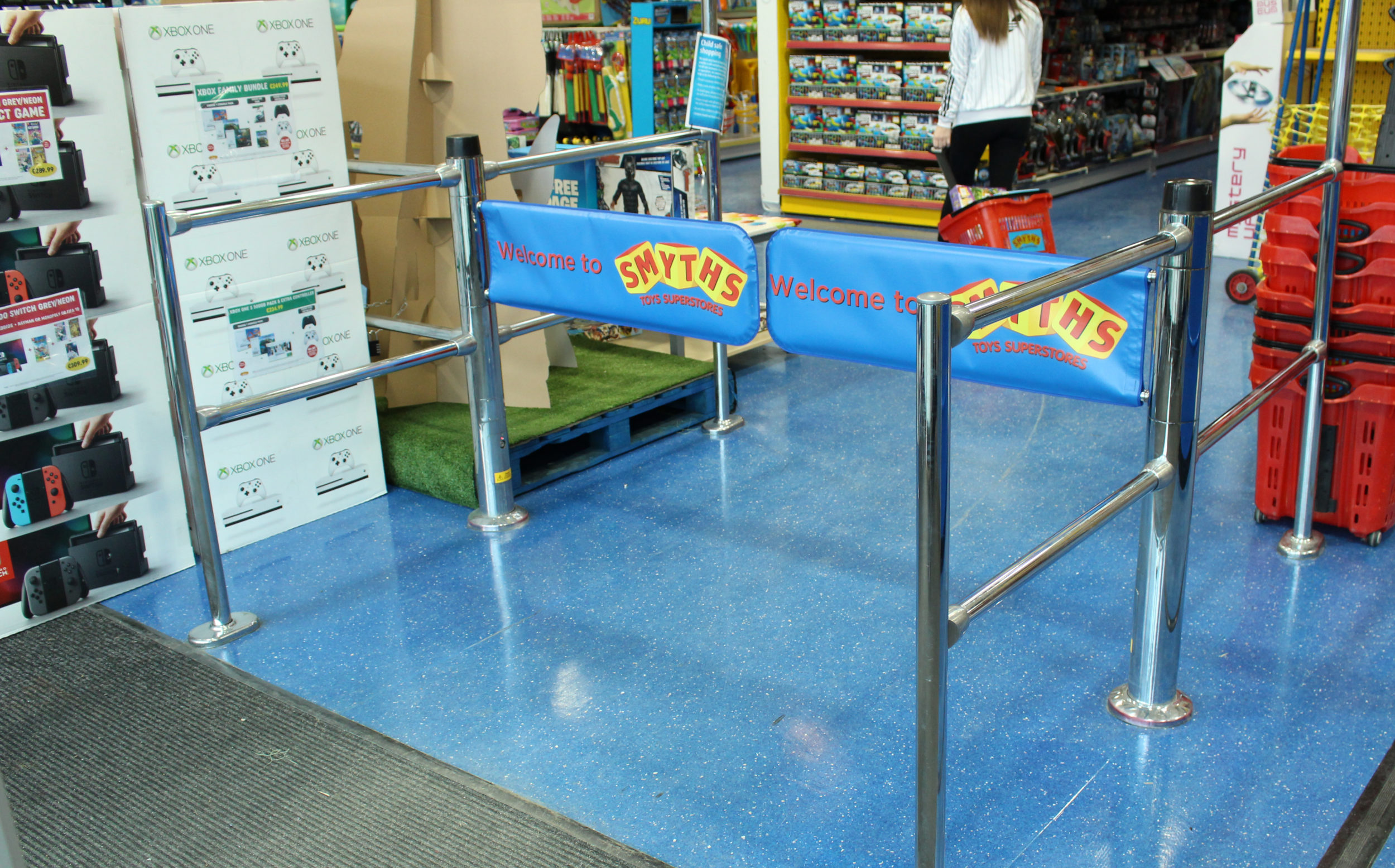 Access Control
Access Control 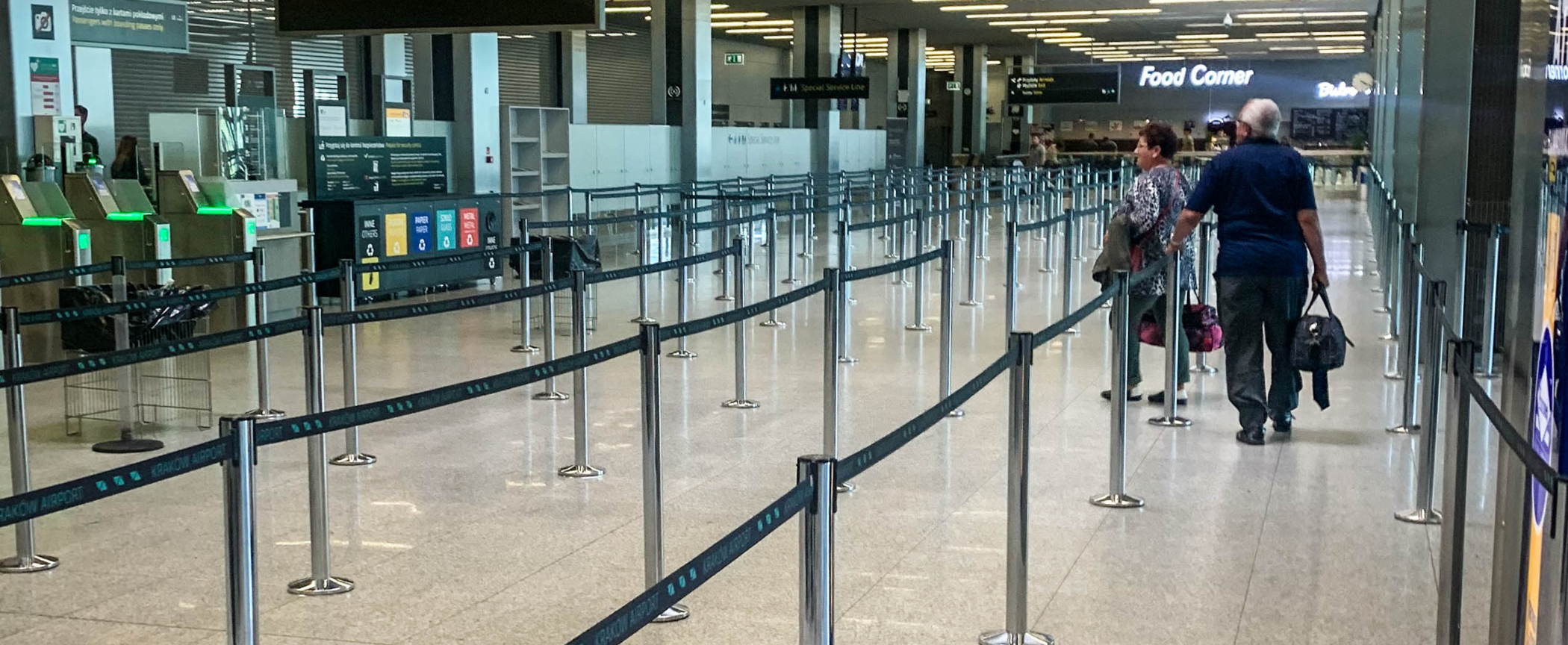 Airports
Airports 
